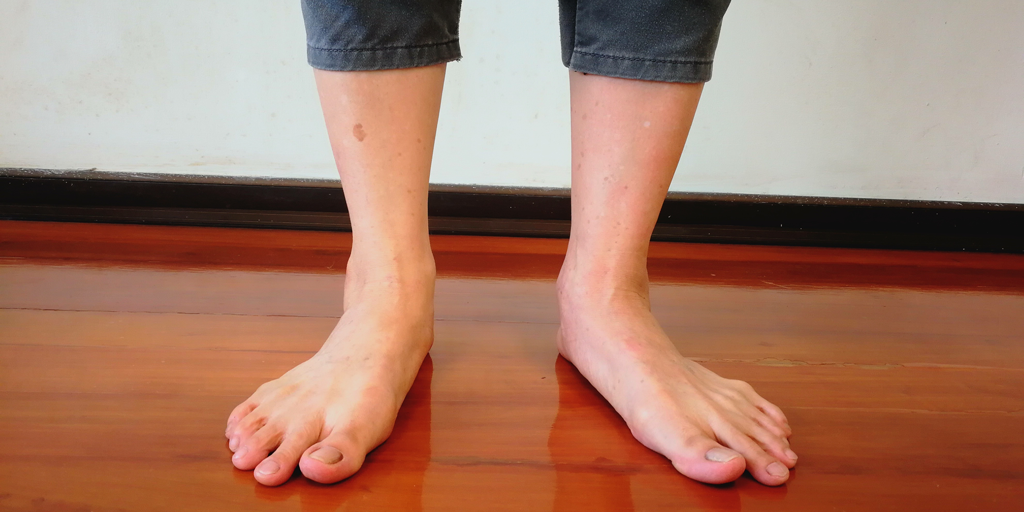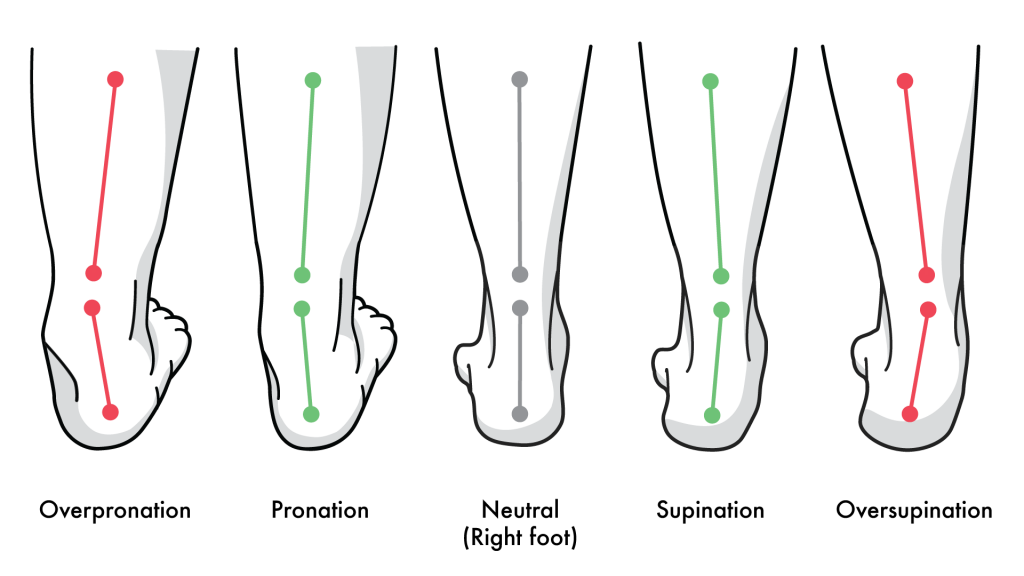Understanding Pronation
If you’ve recently had an assessment with a Canadian certified pedorthist, they may have said you pronate, overpronate, underpronate, or supinate while you walk.
In this article, we will explain what pronation means and why it’s important for your gait.

What is Pronation?
Pronation is the natural movement of the foot as it rolls inward. This movement absorbs shock by distributing the impact forces generated from the ground.
Typically, there would be some splaying of the arch and some shifting of the ankle towards the inside, but the foot may not fully flatten on the ground; the amount of movement depends on the arch height and flexibility of the person.
There is a big misconception that pronation is bad, but it’s actually necessary for shock absorption during the gait cycle. It is easily mistaken for being the cause of foot pain as too much of it can cause malalignment. This is called overpronation.

Overpronation
Overpronating feet tend to fully splay and contact the ground. The ankle may also rotate inwards at a significant angle. This is where we start to see the effects on biomechanics as the knees and hips also start to rotate inwards and be misaligned. This can cause more pull on the surrounding soft tissue structures and hence put more strain on them to create pain over time.
Excess foot movement can also cause extra friction on various areas of the foot, which can result in pressure spots and callusing.
All of this can result in conditions like plantar fasciitis and patellofemoral pain syndrome, which can be controlled and supported by wearing custom orthotics and the proper footwear.
Supination
This term refers to the movement of the foot as it comes up from the ground after being planted, to allow the foot to propel itself forward. Normal supination is required to bring the foot back up, to prepare the body to take its next step.
Underpronation
We also refer to this as ‘oversupination’. When your feet underpronate, they are lacking in movement – in this case, the arch does not splay much. Because of this, the foot rolls towards the outside and doesn’t absorb shock as well.
Conditions such as plantar fasciitis and Achilles tendinitis can affect flat feet and feet that underpronate as well. However, it arises from increased tension buildup in the soft tissue. Due to the structure of the foot, pressure spots can also build up in the forefoot and heel. Therefore, orthotics made for these feet work towards a different purpose, which is to improve pressure distribution and cushioning.
This does not mean everyone with a high arch is a supinator, and everyone with a low arch is an overpronator. Someone can have very high arches and still overpronate when they bear weight or walk.
Ask A Specialist!
Understanding more about how you walk is the first step to understanding what type of shoes you should be wearing.
A gait analysis with a Kintec pedorthist can help you understand how you pronate; book your appointment at a Kintec location near you today!
Patricia Paterson
February 11, 2020 at 3:17 pmI am experiencing pain in my left hip more so than
before. My right leg is shorter, always has been.
My feet are very comfortable with the orthotics.
Will the hip pain right itself
Michael Ryan
March 29, 2020 at 10:01 pmHi Patricia – Sorry for the late response! How has the hip pain been holding up? It may be worth discussing your case with one of our specialists on a free 15-minute phone consult that can be accessed here: https://kintec.net/appointment-booking/. Take care!
vancouver orthotics
May 23, 2020 at 6:06 pmThank you for sharing. Great information with pictures to illustrate. We send our patients to Kintec for knee braces and footwear.
Michael Ryan - Director of R&D
June 8, 2020 at 10:16 amWonderful to hear. Pronation is certainly a complex issue. Don’t forget to check out our latest content on pronation here published just last week: https://kintec.net/blog/pronation-how-much-is-too-much/.
Darrell Phillips
January 20, 2021 at 11:53 pmOne of my legs are longer than the other.Do u guys make a heal to even it?
Michael Ryan - Director of R&D
January 21, 2021 at 11:42 amHi Darrell – Yes, we absolutely can help address leg length differences through heel lifts and shoe modifications. One of our pedorthists can help guide you through this process by booking an assessment at: https://kintec.net/appointment-booking/.